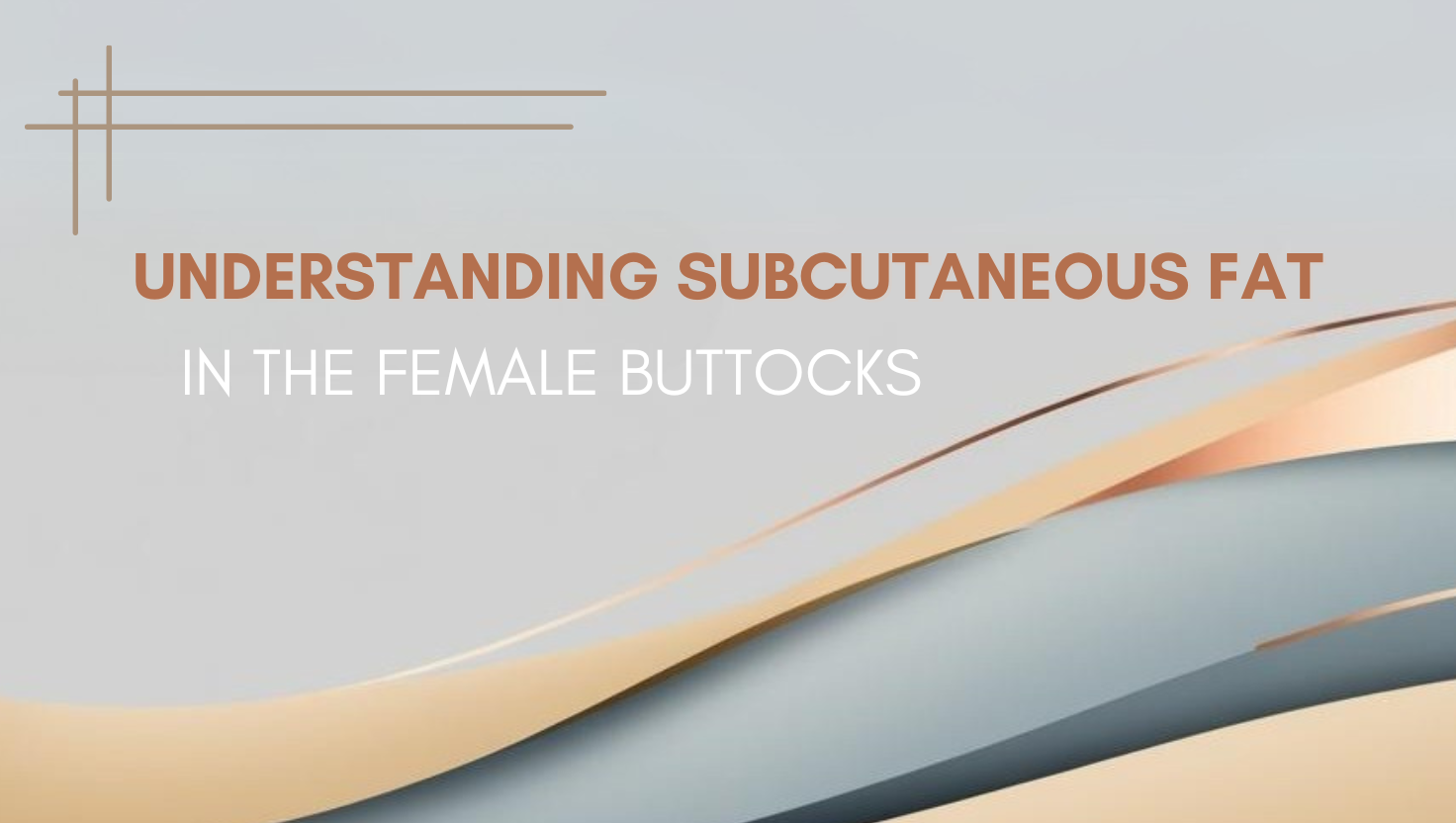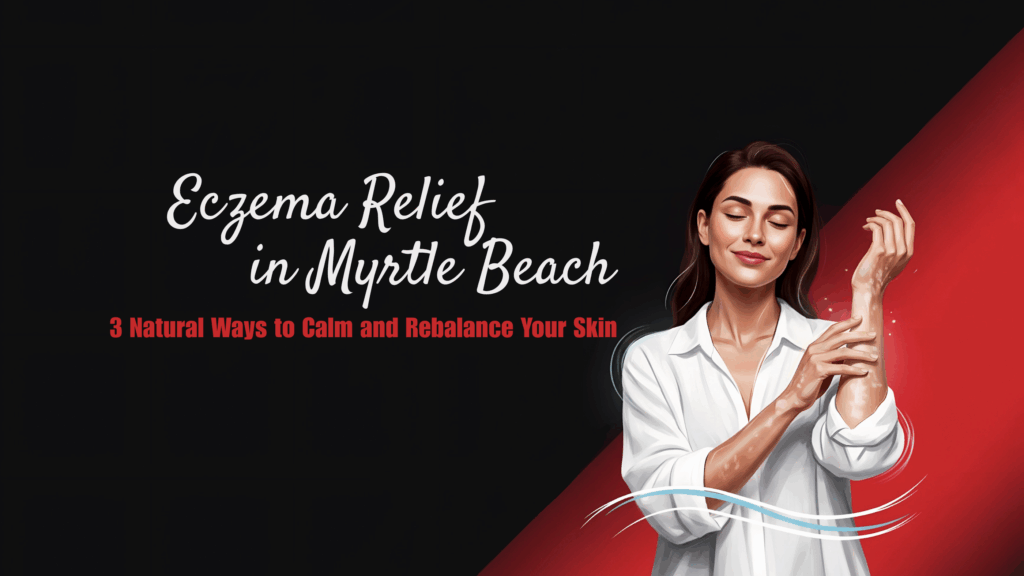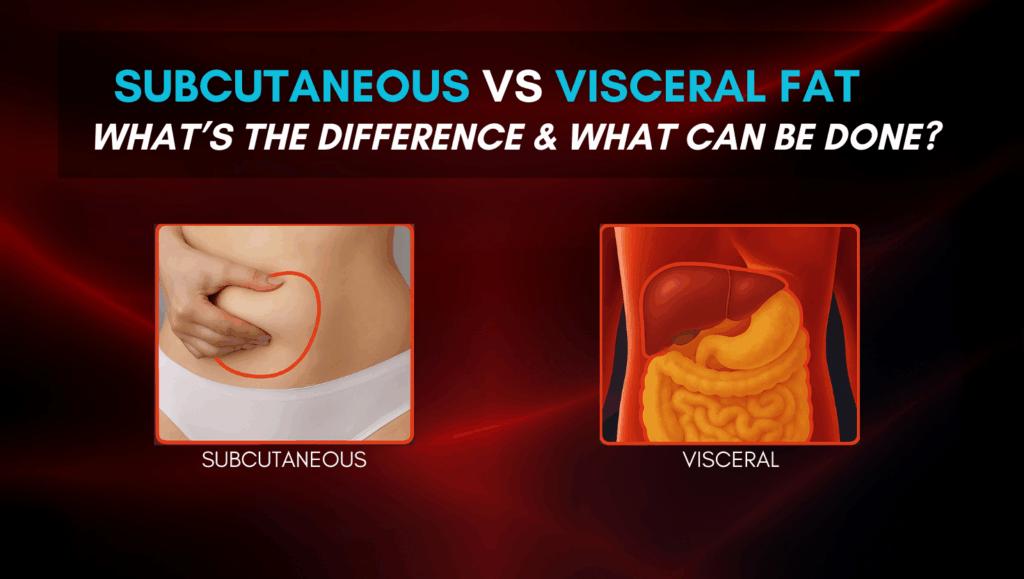Have you looked in the mirror and thought to yourself, “It’s incredible how much shape our bodies can take—especially through the hip and buttocks area?” Many of us acknowledge how much our curves beautify us; however, we do not notice the contribution of subcutaneous fat here. Instead, we usually consider body fat something we could do without; with respect to curves, there is important work being done by fat!
So let us get talking about the subcutaneous fat that is present in the buttocks, its purpose, and how it thus contributes to both shape and health.
What Is Subcutaneous Fat, and Why Do We Have It?
Subcutaneous fat lies immediately below the skin in a fat layer. Unlike visceral fat, which surrounds organs, subcutaneous fat has several key functions: it cushions, insulates, produces hormones, and – let’s face it – helps provide our bodies with that nice, soft, shapely look.
Consider subcutaneous fat to be padding in a plush sofa. It is the soft, protective structure that makes it all nice and comfy. It not only acts as contour and shape but also gives the body an overall more rounded, defined look.
This layer of fat, namely present in hips and buttocks, is a natural feature of women due to higher estrogen levels, which direct fat storage to such areas. It is really not just aesthetics but also an important factor in reproduction and hormonal equilibrium (Karastergiou et al., 2012).

The Functional Benefits of Subcutaneous Fat in the Buttocks
Subcutaneous fat within the buttocks is not only associated with aesthetics, but it is also an important factor for health and mobility. Such fat functions in cushioning the lower body from the impacts of movements like
walking, running, and sitting. Otherwise, without this natural padding, muscles and bones are subjected to pressure and impact to the greater extent.
It is like shock absorbers in a car. This layer of fat takes up some of the impacts, protecting joints and muscles. Most of our weight is carried in the lower body, so it’s especially important.
A unique absorption of shock is facilitated in subcutaneous fat around the thighs and buttocks, and thereby it appears all the more prominent in women. This finding is confirmed in research documented in The Journal of Clinical Endocrinology & Metabolism. (Manolopoulos et al., 2010).

Subcutaneous Fat and Hormone Health
Introductory hormones are subcutaneous fat: hormones that flood blood, like leptin and many more, control appetite and energy. In females, this subcutaneous fat also helps in estrogen production responsible for reproductive health.
Picture subcutaneous fat to work with your blood as a small hormone factory: one which is always working behind the scenes to balance all things. Without such subcutaneous fats, it will be much harder to maintain weight regulation and other important functions of the human body.
As per a study published in the Journal of Obesity, fat with a subcutaneous position acts as a source of hormones which in turn act as significant metabolic regulators and reproductive agents, especially in women (Bluher, 2013).

Why the Buttocks? The Science of Fat Distribution
Fat is preserved in certain parts of a woman’s body such as hips, thighs, and buttocks. This pattern of fat distribution called gynoid fat distribution is usually the result of the influence of estrogen secreted in the body and results in a classical hourglass figure (Lovejoy et al., 2009).

The most common reason cited among active and health conscious individuals for still noticing fat in such areas is that our bodies still store a tiny amount of fat in the natural energy storage or reserve. This is strictly to reserve energy for future use, especially when the body may need little excess fuel.
Among researches, it is evident that this fat storage in the body stems from evolutionary needs; that is, keeping a reserve energy supply that can be used during pregnancy and breastfeeding (Wells, 2006).
Subcutaneous Fat vs. Visceral Fat: Why the Difference Matters
While subcutaneous fat in the buttocks serves several beneficial purposes, it is different with visceral fat, which raises health risks. Essentially, visceral fat surrounds the organs and is known to cause heart disease or diabetes. Thus fat in the thighs and buttocks is less dangerous and is said to be relatively good.
Subcutaneous fat represents the body’s safe space for storage. It essentially packs fat away from the vital organs, and that is why it is often considered protective fat. Actually, studies suggest that higher amounts of gluteofemoral fat (buttocks and thighs) are associated with a lower risk of metabolic diseases.
Thus, according to a review by The Lancet Diabetes & Endocrinology, gluteofemoral fat is protective in nature, since it promotes more favorable metabolic health (Snijder et al., 2006).

The Aesthetic and Functional Balance: Embracing Subcutaneous Fat
Often, we often emphasize reducing body fat; however, it is important to consider the position of subcutaneous fat tissue, especially on the buttocks. This fat tissue contributes to the maintenance of a smooth, curvy shape on the outside while upholding health on the inside.
Recently, body positivity movements have empowered people to accept natural shapes, appreciating therein that fat is not necessarily “bad”. Recognition of the unique function of subcutaneous fat in defining human shapes stands among the factors for this paradigm shift.
Research also shows that subcutaneous fat in the buttocks can act as padding for the skin against environmental aging factors, thereby preserving its elasticity and keeping it looking youthful (Farage et al., 2009).
What Can You Do to Support Healthy Subcutaneous Fat?
Though the buttock subcutaneous fat is beneficial for health, a good amount of balance should be maintained. Here are a few friendly tips on supporting healthy fat and muscle in this area:
- Strength Training: Activities like squats, lunges, and glute bridges build muscle under subcutaneous fat, thereby toning and defining it (Schoenfeld, 2010).
- Nutrition: An appropriate nutrition base supports the well-being of muscle and skin elasticity. Protein-rich foods with healthy fat (such as omega-3s) keep your system from getting depleted and starving (Layman et al., 2005).
- Hydration: Proper hydration aids skin firmness and lessens the look of cellulite, which is often exacerbated with dry skin (Nakamura et al., 2013).
Consideration for Massage or Foam Rolling: Gentle massage and foam rolling can enhance circulation and fascia, connective tissue around muscles, which helps in the appearance of smooth skin (Schleip et al., 2012).

Appreciating Your Body’s Natural Shape
After all, the subcutaneous fat resides in the buttocks and is among many things that differentiate us from one another. It is a natural thing with a purpose; it is possibly good for health too! The why’s behind it can lead us to appreciate our bodies a bit more.
References
- Karastergiou, K., et al. (2012). The role of adipose tissue in female reproductive health. Nature Reviews Endocrinology.
- Manolopoulos, K. N., et al. (2010). The functional roles of body fat in health and disease. Journal of Clinical Endocrinology & Metabolism.
- Bluher, M. (2013). Importance of adipokines in obesity and metabolic diseases. Journal of Obesity.
- Lovejoy, J. C., et al. (2009). Fat distribution and cardiovascular disease risk in postmenopausal women. Journal of Clinical Endocrinology & Metabolism.
- Wells, J. C. (2006). The evolution of human fatness and susceptibility to obesity: An ethological approach. Biological Reviews.
- Snijder, M. B., et al. (2006). Gluteofemoral body fat and metabolic risk factors in middle-aged men and women. The Lancet Diabetes & Endocrinology.
- Farage, M. A., et al. (2009). Characteristics of the aging skin. Clinical Interventions in Aging.
- Schoenfeld, B. J. (2010). The mechanisms of muscle hypertrophy and their application to resistance training. Journal of Strength and Conditioning Research.
- Layman, D. K., et al. (2005). Protein in optimal health: heart disease, obesity, and more. American Journal of Clinical Nutrition.
- Nakamura, K., et al. (2013). The effect of hydration on skin elasticity. Journal of the American Academy of Dermatology.
- Schleip, R., et al. (2012). Fascial plasticity – A new neurobiological explanation. Journal of Bodywork and Movement Therapies.










